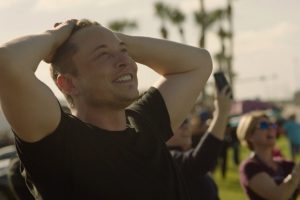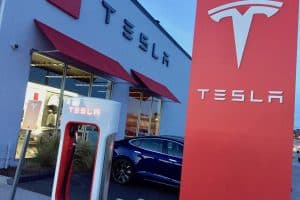Key Takeaways
- Tesla Energy outperformed the automotive division in Q1 with significant growth in battery storage deployments.
- The Energy division deployed 10.4 GWh of storage products, marking a 156% year-over-year increase.
- This quarter was second only to Q4 2024 for Tesla Energy in terms of deployments.
- Tesla continues to expand its energy storage projects globally, with expectations to set records in 2025.
- Tesla’s automotive deliveries fell short of Wall Street estimates, sparking concern among investors.
- Model Y production updates caused significant delays, impacting Q1 delivery figures.
- Analysts speculate possible brand damage affecting Tesla’s automotive sales, though this may become clearer in Q2.
In the rapidly-evolving landscape of sustainable energy and automotive technology, Tesla stands as a beacon of innovation and ambition. While many of us associate the brand primarily with its groundbreaking electric vehicles, an often-overlooked segment has been making significant strides. Tesla Energy’s impressive performance in Q1 has brought it into sharper focus, especially in light of the automotive sector’s recent challenges. In this blog post, we’ll delve into the details of Tesla’s Q1 performance, exploring the reasons behind the numbers and what they mean for the company’s future.
Tesla Energy: A Beacon of Performance
A Noteworthy Quarter
During the first quarter, Tesla Energy deployed a remarkable 10.4 GWh of energy storage products. This figure represents a staggering 156% increase compared to the same period last year. Such growth positions Tesla Energy as a key player in the global energy storage market.
Historical Context
This recent quarter was second only to Q4 2024 regarding energy deployments. This context underscores the consistent growth trajectory that Tesla Energy has maintained and hints at even more significant achievements in the future.
Global Expansion
Tesla has been relentless in expanding its energy projects worldwide. This expansion strategy ensures that the company remains at the forefront of sustainable energy solutions, positioning itself to potentially set new records by 2025.
Challenges in Tesla’s Automotive Sector
Underperforming Deliveries
Contrasting the energy division’s success, Tesla’s automotive deliveries notably missed Wall Street estimates in Q1. This shortfall has raised concerns among investors, causing a stir in financial circles.
Production Hiccups
One of the primary factors behind the lagging deliveries is related to Tesla’s switch over to a new Model Y. The update of manufacturing lines across global facilities resulted in “several weeks” of lost production, significantly impacting Q1 numbers.
Potential Brand Impact
There’s a growing narrative around potential brand damage affecting Tesla’s automotive sales. Some analysts suggest public perceptions, driven by various external factors, might have influenced sales figures. However, the full picture will likely be clarified in Q2, post-reporting in July.
Predictions and Perspectives
Looking Ahead to Q2
As we move into Q2, several predictions can be made:
- Stabilization of Model Y Production: With the manufacturing process expected to stabilize, we might see improvements in delivery consistency and volume.
- Enhanced Energy Deployments: Tesla Energy is poised to continue its upward trajectory, possibly setting new benchmarks by the year’s end.
- Brand Perception Dynamics: The next quarter will be crucial in determining if brand perception truly impacts sales or if the current figures are an anomaly.
- Investor Reactions: Depending on Q2 outcomes, investor sentiment might shift, either bolstering confidence in Tesla’s strategic direction or increasing scrutiny.
The Dual Narrative of Tesla
Tesla’s story is one of dual narratives. On one side, we have the energy division’s success, marked by innovation and impressive growth figures. On the other side, there’s the automotive sector, grappling with operational challenges and market expectations. Understanding this balance is crucial for stakeholders, from investors to consumers, as Tesla navigates the complexities of modern industry landscapes.





